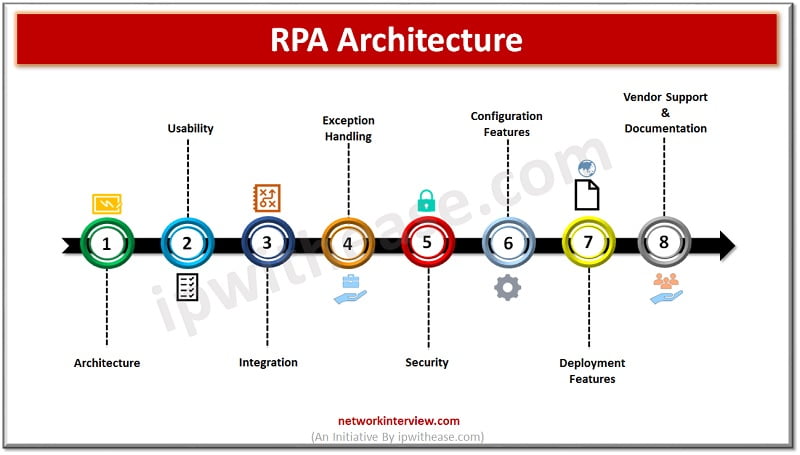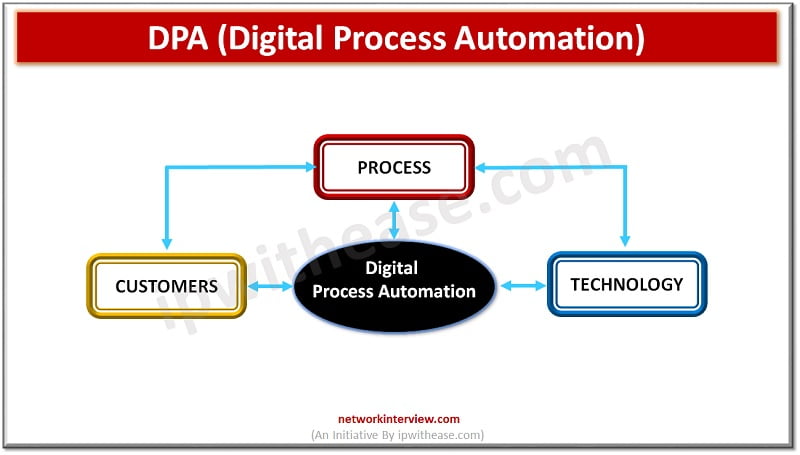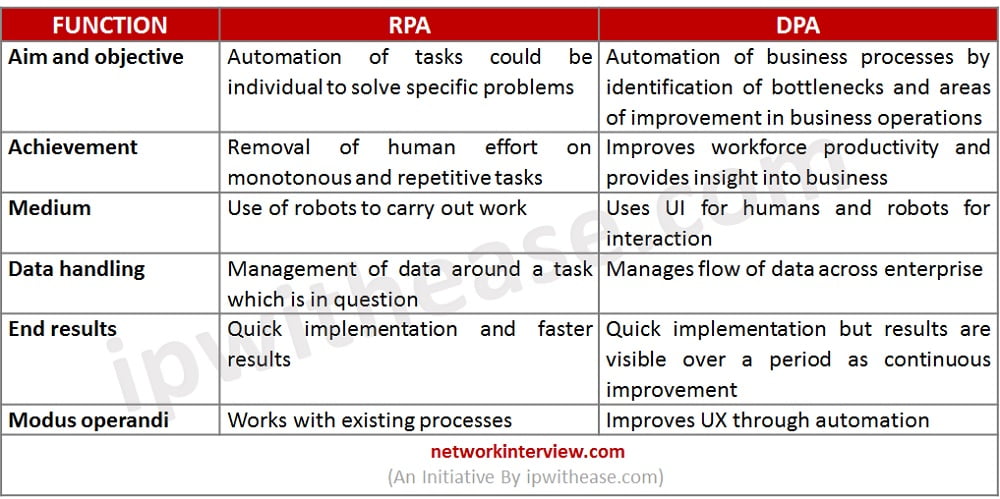
RPA (Robotic Process Automation) vs DPA (Digital Process Automation)
Process Automation
As per Gartner prediction 72% of the enterprises will be working with Robotic process automation (RPA) in next two years and Digital process automation (DPA) is identified as major component for digital transformation with DPA market worth $6.76 billion and expected to rise to $12.61 billion by year 2023.
So, what is this buzz about RPA and DPA? Process automation has always been a key driver to run business efficiently with simplification of complex manual tasks to speed up operations. It has three major functions namely streamlining processes, centralizing information, and reduction in human touch points.
Today we look more in detail about Robotic process automation (RPA) and Digital process automation (DPA) concepts, how they differ from each other, what are the advantages of both and use cases.
What is RPA (Robotic Process Automation)?
The use of software which mimics human behaviour and carry out repetitive high volume basic administrative tasks which are time consuming. The monotonous tasks taken over by RPA which frees employees to focus on more high value activities, including the ones which require emotional intelligence and logical reasoning. It can be used to automate queries and calculations as well as maintaining records and transactions. It is easy to deploy over existing applications.

Benefits
- Effective use of staff resources
- Enhanced customer interactions
- Reduction in costs
- Improvement in accuracy
- Elimination of human errors
- Completion of automated tasks faster with less effort
Use cases
- Automating service order management, quality reporting etc.
- Automating reports management and healthcare systems reconciliation
- Automation of claim processing in insurance
- Automation of bills of materials generation
- Automation of account setup and validation of meter readings in energy and utility field
- Automation of hiring process, payroll, employee data management
- Automation of general ledger, account receivables and payables etc.
- Automation of requisition to issue purchase order, invoice processing etc.
- Automation of customer services activities
- Building, testing, and deploying infrastructure such as PaaS
- Mass email generation, archival and extraction
- Conversion of data formats and graphics
What is DPA (Digital Process Automation)?
DPA automates processes that can span across applications. It has more to do with Business process management (BPM). It takes the entire infrastructure of an enterprise business processes and streamlines them to improve efficiency and cost reduction. It evolved out of the need of enterprises to automate business processes to achieve digital transformation.
Its aim is to extend the business process to partners, customers, and suppliers to offer a better experience. DPA are usually used to automate tasks like customer onboarding, purchase orders, credit approvals and many other similar business processes.

Benefits
- Time savings
- Cost savings
- Efficiency gains
- Improved customer experiences
Use cases
- Customer onboarding including auto checks, data entry across multiple applications, login credentials generation, setting up accounts and sending welcome email
- Procurement functions such as copying data between ERP and ordering systems, data entry into tracking systems, auto invoice post order placement etc.
- Order fulfilment – automate various back-end tasks associated with order fulfilment of new products, estimation of fulfilment and delivery times, local taxes calculations, shipping manifest generation, order status tracking and receipt of package by customer
Robotic Process Automation vs Digital Process Automation
Below table summarizes the difference between RPA and DPA:

Download the comparison table: RPA vs DPA
Continue Reading:
RPA – Robotic Process Automation
10 Most Popular Robotic Process Automation RPA Tools
Tag:New technology, services



